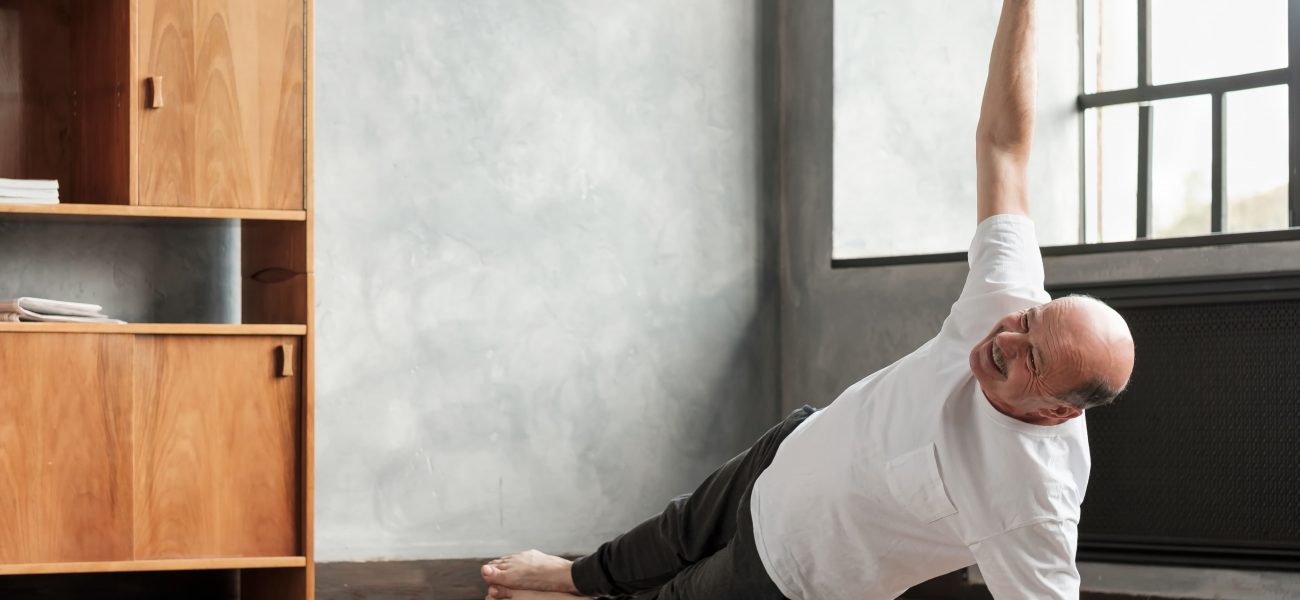Tips to manage depression and anxiety in incontinence
Incontinence is a health condition which prevails in elderly people and is generally characterised by psychological impacts on their lives. Anxiety and depression are the two common outcomes of suffering from urinary incontinence.
Medical experts also take into account the fact that elderly people with OAB display signs of stress, which further results in sadness and anxiety. They take a lot of stress, have erratic eating habits, and suffer from headaches.
Fortunately, there are ways to lower stress levels and depression by managing incontinence. Here are some tips to cope with the mental health challenges that comes with bladder control problems:
Do Pelvic Floor Exercises
The most preferred way to deal with an overactive bladder is to do pelvic floor exercises. Pelvis, bladder, and urethra are the muscles present in the lower abdomen which in combination are known as pelvic floor muscles. These muscles tend to become fragile or weak due to surgeries, pregnancy and other reasons, leading to the incompetency of the pelvic floor to control the organs.
Therefore, trying exercises to bring back their power can help to fight against incontinence successfully.
Get the Right Treatment for OAB Symptoms
People might think that the Overactive Bladder is an inevitable part of ageing. Though it might be true, there are some treatment options to relieve incontinence-induced stress. This may include:
- Healthy lifestyle and dietary changes
- Prescribed medication
- Using Adult Diaper Pants
By taking help from a physician one can easily get rid of the symptoms leading to OAB.
However, along with these, some stress-relieving practices like listening to calming music, following the passion, travelling, not thinking too much about incontinence issues, etc., can prove to be beneficial in controlling stress hormones.
Moreover, old people usually consider wearing adult diaper pants, as they are easy and convenient. Lifree also offers reliable and soft diaper pants to curb mobility and leakage issues. The pants have stretchable and smooth leg passage to provide the ultimate comfort to the users. Furthermore, they feature a powerful absorbing core that builds confidence in elderly people by keeping leakage worries at bay. – highlight the key features of Lifree pants.
FAQ’s
2. What practical steps help manage anxiety related to incontinence?
Managing anxiety tied to incontinence begins with planning. Stock up on reliable hygiene products such as absorbent adult diapers and extras at home and on-the-go. Plan bathroom breaks, carry a travel kit with spare underwear or wipes, and wear breathable, dark clothes. Practice relaxation techniques—deep breathing, meditation, or quiet walks—to reduce worry before outings. Focus on your strengths and plan activities around support levels. Use tools like reminder notes or apps to stay prepared. All these steps help build confidence, reducing the fear of sudden episodes. Over time, structured routines and proper resources help shift emotions from worry to control and preparedness, easing anxiety.
3. How can caregivers support someone with incontinence-related depression?
Caregivers can play a vital role in emotional support. Begin by listening without judgment—understanding that incontinence affects self-esteem. Compliment the person’s effort to manage the condition and offer help where needed, such as reminding or assisting during product changes. Help establish routines—bathroom visits, supplies, proper personal hygiene—while allowing the person privacy and independence as much as possible. If signs of depression or anxiety are strong, gently encourage them to speak to a mental health professional. Offer companionship or suggest low-pressure social activities. Showing understanding, patience, and practical help reduces feelings of isolation and boosts emotional well-being in those managing incontinence.
4. Can therapy or counseling help with depression linked to incontinence?
Yes, therapy or counseling can greatly aid people facing depression or anxiety due to incontinence. Therapists offer a safe space to talk about fears and stress without shame. Cognitive behavioral therapy (CBT) can shift negative thought patterns and teach ways to cope with triggers in social situations. Group sessions or support groups also remind individuals they’re not alone. A mental health professional may also recommend relaxation techniques, breathing exercises, or journaling to reduce daily anxiety. Therapy helps build emotional resilience while teaching daily coping skills. When paired with practical incontinence management tools, mental health support can greatly enhance confidence and quality of life.
5. Are there lifestyle habits that can reduce anxiety tied to incontinence?
Absolutely. A balanced daily routine promotes both physical and emotional well‑being. Regular physical activity, such as walking or gentle stretching, helps improve mood and bodily function. Adequate sleep and a healthy diet—rich in fiber and hydration—support bladder stability and prevent discomfort. Practice relaxation techniques like deep breathing or mindfulness to manage stress. Socializing with trusted friends or family can offer emotional reassurance. Keeping a routine with bathroom visits prevents sudden urges and improves control. Seeking creative hobbies or light exercise can shift focus away from worries. Structured habits and small lifestyle adjustments offer a foundation of confidence, helping reduce anxiety associated with incontinence over time.
6. How can someone overcome the embarrassment of wearing incontinence products in public?
Overcoming embarrassment starts with preparation and mindset. Wearing reliable incontinence products—like highly absorbent adult diapers or pads—helps prevent accidents and odor. Choose well-fitted clothing, preferably dark and breathable, to conceal any signs. Carry a small kit with spare items and disposal bags for quick changes. Practice standing or sitting posture in private to plan discreet changes if needed. Remind yourself that many people face similar conditions—what matters most is your comfort and dignity. Confidence builds over time when you realize accidents can be prevented and discreetly managed. Support groups or conversations with others in similar situations help normalize these experiences and combat feelings of shame.
7. Can peer support or groups help reduce incontinence-related emotional distress?
Yes, peer support or community groups make a meaningful difference. Sharing experiences with others who understand helps reduce feelings of isolation and shame. Hearing how others manage similar challenges—such as packing kits, planning outings, or choosing products—offers practical strategies. Emotional connection with people who truly understand reduces stress and boosts morale. Support groups, whether online or in person, provide a safe place to ask questions and find encouragement. Some individuals find moderated forums empowering as they learn from diverse experiences. Peer support also affirms that they are not alone and that emotional resilience is shared. Community support fosters acceptance, practical insights, and a sense of belonging.
8. How does wearing comfortable products improve mental health in incontinence?
Wearing reliable, comfortable incontinence products eases stress and builds emotional strength. These items—when absorbent, breathable, and invisible under clothing—reduce the fear of leaks, odor, or discomfort. That confidence lets individuals go out, work, or socialize without worrying about accidents. Cleaner and drier skin also prevents irritation, enhancing comfort. Feeling prepared with the right supplies empowers people to remain independent. This emotional reassurance reduces daily triggers for anxiety. Over time, knowing you are well-equipped strengthens self-esteem and shifts focus from managing urine to living daily life. Comfort in physical care supports mental well‑being holistically.
9. Is self-care important when dealing with incontinence-related stress?
Yes, self‑care is vital for managing both physical and emotional stress. Set aside time for relaxing activities—reading, listening to music, journaling, or gentle walks. Pay attention to your mood and rest when needed. Practicing good incontinence hygiene—using creams, changing products promptly, and keeping skin clean—boosts comfort. Balanced meals and breathing exercises help reduce tension. Connect with someone you trust when you feel low. Avoid comparing yourself to others or feeling ashamed. Self‑kindness and self‑acceptance build confidence. Consistent self‑care routines reinforce emotional strength, making incontinence feel more manageable, not defining. You deserve self-compassion and daily calm.
10. When should someone seek professional help for depression linked to incontinence?
If feelings of sadness, anxiety, isolation, or mood shifts last for several weeks or interfere with daily life, professional help may be needed. Signs such as loss of interest in activities, trouble sleeping, or constant worry about accidents suggest it’s time to talk to a counselor or psychiatrist. Mental health professionals can offer therapy, coping strategies, or referrals when needed. Caregivers can also ask a doctor for recommendations. Addressing emotional challenges early can prevent long-term distress. Mental health care combined with practical incontinence management—such as using appropriate products and routines—offers holistic relief. Asking for mental health support shows strength, not weakness, and helps improve quality of life significantly.






















